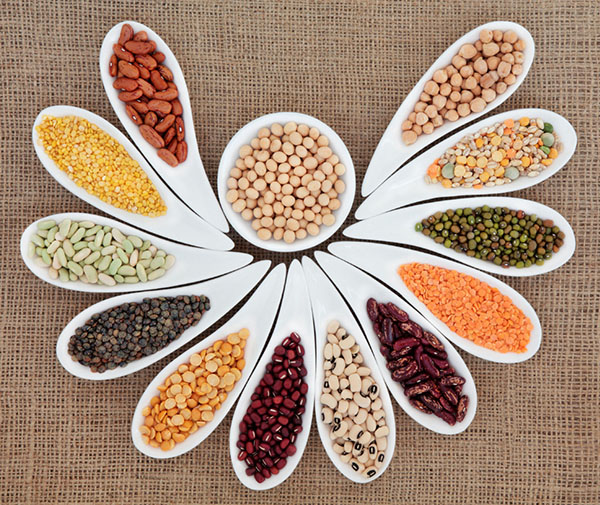Benefits of pulses
Pulses are also know and often referred to as ‘legumes’. Pulse is the term for the edible seeds of legumes (plants with a pod), which includes dry peas, lentils, dry beans, and chickpeas. They are a cheap, low-fat source of protein, fibre, vitamins and minerals,
1. Benefits of pulses. Can you please mention their benefits along +with their names.
Pulses provide protein and fibre, as well as are a significant source of vitamins and minerals, such as iron, zinc, folate, and magnesium, and consuming half a cup of beans or peas per day can enhance diet quality by increasing intakes of these nutrients. In addition, the phytochemicals, saponins, and tannins found in pulses possess antioxidant and anti-carcinogenic effects, indicating that pulses may have significant anti-cancer effects. Pulses are high in fibre and have a low glycemic index, making them particularly beneficial to people with diabetes.
Pulses are a very good source of protein. This means they can be especially important for people who do not get their share of protein by eating meat, fish or dairy products or in other words for vegetarians.
Pulses are very high in fibre. They contain both soluable and insoluble fibres. Soluble fibre helps lower blood cholesterol levels, while insoluble fibre helps with digestion as well as maintaining regular bowel movements. All whole and all broken pulses with the husklike whole moong, black chana, green moong dal, broken urad dal,etc.
Pulses have a low glycemic index. Most of the carbohydrates in pulses are fibre and starch that prevent blood sugars from rising quickly after a meal or snack. All whole pulses like whole moong, black channa, etc.
Pulses are an excellent source of folate, which has been shown to lower homocysteine levels. Folate is especially important during periods of rapid growth, such as pregnancy and infancy. black-eyed peas or lobiya and lentils (black bean urad sabut and masoor sabut),etc.
Pulses are gluten free and can be eaten by people with celiac disease. Pulses are a great alternative to wheat-based products. They add starch, fibre, protein, and many vitamins and minerals that may be lacking from a gluten-free diet.
A healthy vegetarian diet should include a variety of peas, beans, lentils and chickpeas in place of meat,poultry, chicken and fish. Eating pulses with a grain, such as wheat, rice, or oats, ensures a high quality protein.
2. What is the perfect consumption intake or limit of Pulses?
The minimum effective dose of pulse 130 grams per day which is equal to ¾ cup or one serving. Consumption of dietary pulses (median dose 130 g/d, about 1 serving daily) reduces LDL cholesterol, provides about15 gms of fiber and about 7-9 gms of protein.
What can be its side effects if over consumed?
For some people over consumption of pulses may produce gas and bloating, similar to the effects produced by certain other foods such as . cabbage, broccoli, etc.
Also pulses contain phytates and other anti-nutritional factors, which may cause these effects and may reduce the availability of the nutrients in pulses and this can be reduced by proper soaking and boiling.
Who can eat pulses and who should avoid?
Pulses can be consumed by all the different age groups but quantities need to be modified according to the requirement of protein for that particular age group. Children and young adults need more proteins as compared to adults, so can take more pulses comparatively.
Also, people having increased levels of uric acid or serum urea creatinine need to restrict proteins in general and so pulses. Patients suffering from kidney disease or those having gout need to consult a Dietician to calculate their protein requirement in diet.

